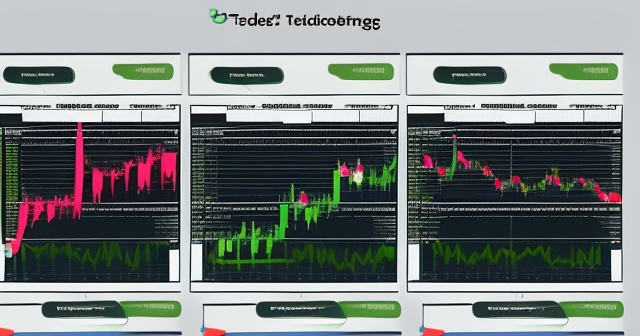Navigating the Spread: Understanding Bid and Ask Prices for Smarter Trading Execution
Welcome, fellow traders and aspiring investors! As you embark on or deepen your journey into the financial markets, you’ll quickly encounter two fundamental numbers that define the immediate landscape of any asset you wish to trade: the bid price and the ask price. These aren’t just abstract figures; they are the real-time pulse of buying and selling interest, dictating the price at which a transaction can actually occur right now. Understanding the dynamic relationship between the bid and ask is absolutely crucial, not just for knowing the price but for mastering your trade execution.
Think of it like this: when you go to exchange currency for a trip, the bank has two prices. They will buy your foreign currency at one rate (the lower rate, their bid) and sell you foreign currency at another rate (the higher rate, their ask). In financial markets, it’s the same principle, but it’s happening constantly for stocks, bonds, options, Forex pairs, and other securities.
The difference between these two prices is known as the bid-ask spread, and it’s a critical concept we’ll explore in depth. It tells us a lot about the market for that specific security right now. It’s also the primary way market makers and liquidity providers earn their living. But for you, the individual trader or investor, the bid ask price dynamic directly impacts the cost of your trades and how quickly they are filled. So, the seemingly simple question, “Should I buy at the bid price or the ask price?” is far more nuanced than it appears. It involves understanding market mechanics, order types, and your own trading goals.
In this guide, we’ll break down the components of the bid and ask, explore the forces that shape them, delve into how your choice of order type interacts with these prices, and ultimately, help you develop a strategic approach to trade execution that aligns with market realities and your personal objectives. By the end, you’ll have a solid grasp of how to navigate the spread and make more informed decisions about *when* and *how* to enter or exit your positions.
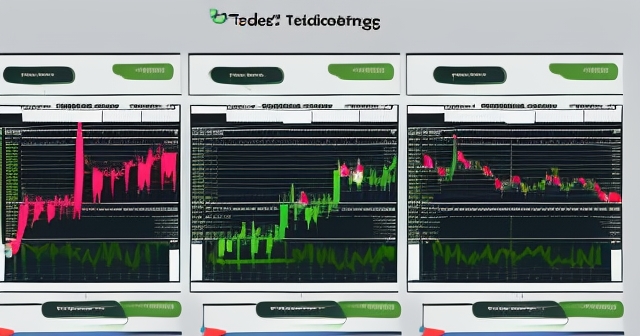
The Foundation: What Exactly Are Bid and Ask Prices?
Let’s start with the absolute basics. In any functioning market where buyers and sellers meet, there needs to be a mechanism to agree on a price. In modern electronic markets, this negotiation happens instantaneously and is represented by the bid price and the ask price.
The bid price represents the highest price a buyer in the market is currently willing to pay for a specific quantity of a security. It is the price at which someone is ready to buy right now. Imagine a queue of buyers, each stating the maximum they are willing to pay; the bid price is the highest offer from this queue.
Conversely, the ask price (sometimes called the offer price) represents the lowest price a seller in the market is currently willing to accept for a specific quantity of that same security. It is the price at which someone is ready to sell right now. Picture a queue of sellers, each stating the minimum they will sell for; the ask price is the lowest offer from this queue.
These two prices are always quoted together, forming a two-sided quotation. For any given security at any given moment, the ask price will virtually always be higher than the bid price. Why? Because that difference, the bid-ask spread, is essentially the transaction cost or the compensation for the entities providing liquidity to the market – the market makers.
The presence of both a clear bid price and a clear ask price is a hallmark of an active and functioning market. Without them, it would be incredibly difficult and time-consuming for buyers and sellers to find each other and agree on a price for every single trade.
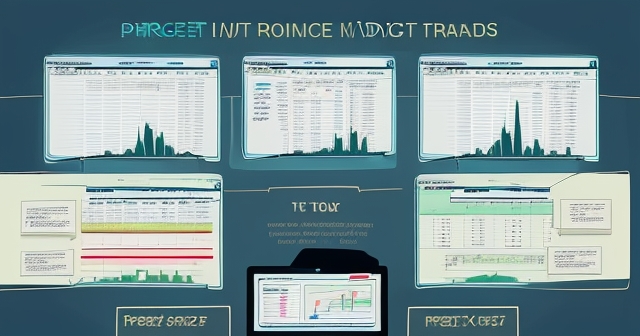
The bid-ask spread is calculated as the difference between the ask price and the bid price (Ask Price – Bid Price = Spread). This spread is more than just a mathematical difference; it serves as a vital indicator of a security’s liquidity and represents a real cost you, the trader, will incur.
Think of liquidity as how easily and quickly you can buy or sell an asset without significantly impacting its price. A narrow spread indicates high liquidity. This usually happens with heavily traded assets like major stock indices (like the components of the Dow Jones Industrial Average or major S&P 500 stocks), popular currency pairs in Forex, or high-volume exchange-traded funds (ETFs).
Why does a narrow spread mean high liquidity? Because there are many buyers and sellers actively placing orders. The highest bid from a buyer is very close to the lowest ask from a seller, meaning they are practically meeting in the middle. Trades can be executed quickly and in large size without causing the price to jump or drop significantly.
On the other hand, a wide spread indicates lower liquidity. You often see this in less popular stocks (penny stocks, small-cap companies), certain bonds, or less traded Forex pairs. In these markets, there are fewer participants, and the gap between what the highest buyer is willing to pay and the lowest seller is willing to accept is larger. Executing a trade, especially a large one, can be more challenging and potentially move the price against you. The cost of trading, represented by the spread, is higher.
For the individual trader, the spread is a direct cost. When you buy, you generally pay the ask price, which is the higher price. When you sell, you generally receive the bid price, which is the lower price. To make a profit, the price of the asset must move upwards from the ask price you paid (when buying) or downwards from the bid price you received (when selling) by an amount greater than the spread.
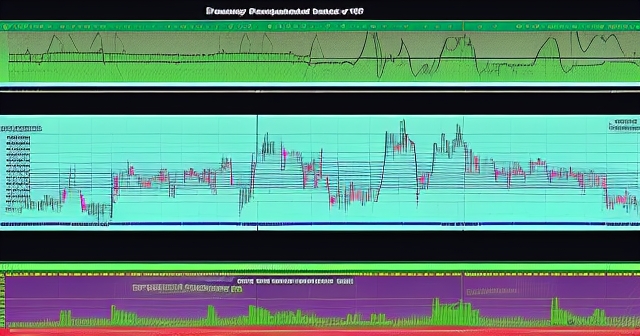
For instance, if a stock is quoted with a bid of $10.00 and an ask of $10.05, the spread is $0.05. If you buy at $10.05 and immediately sell, you would sell at $10.00 (the bid), losing $0.05 per share, which is the cost of crossing the spread.
At the heart of all market movements are the forces of supply and demand. These forces don’t just determine whether the overall price of a security goes up or down; they also constantly influence the specific levels of the bid price and the ask price, and consequently, the width of the bid-ask spread.
Imagine a surge in buying interest for a particular stock. Buyers are becoming more eager, willing to pay higher prices. This increased demand will push the bid price upwards as buyers compete. Sellers, seeing the increased interest, may also raise their ask price. If demand is very strong relative to supply, the price will generally trend higher, with both bid and ask levels rising.
Conversely, if there’s a wave of selling pressure (perhaps due to negative news), sellers become more desperate to offload their shares, willing to accept lower prices. This increased supply will push the ask price downwards. Buyers, seeing the selling pressure, may lower their bid price. If supply overwhelms demand, the price will generally trend lower, with both bid and ask levels falling.
Beyond the directional push on prices, supply and demand also dictate the efficiency of the market, which reflects in the spread. Factors influencing the spread width include:
- Trading Volume: High trading volume means there are many transactions happening. This generally indicates strong interest from both buyers and sellers, leading to a narrow spread as bids and asks stay close together. Low volume means fewer transactions and often results in a wider spread.
- Market Volatility: During periods of high market volatility or significant news events (like earnings announcements, economic data releases, or geopolitical shifts), spreads tend to widen. The uncertainty makes market makers less willing to take on risk by holding inventory, so they widen the gap between their buy and sell prices to compensate.
- News and Information Flow: Sudden news can dramatically shift supply and demand dynamics, causing rapid price changes and temporary widening of spreads as the market digests the new information.
- Asset Specifics: The type of asset matters. Highly standardized and frequently traded assets (like major Forex pairs, large-cap stocks) typically have tighter spreads than less standardized or thinly traded ones (like certain corporate bonds, small-cap stocks, or exotic currency pairs).
- Time of Day: For certain markets, like Forex, spreads can widen during less active trading hours or around major economic news releases.
Understanding these factors helps you anticipate how the bid and ask prices, and the spread between them, might behave under different conditions. This is crucial for choosing the right execution strategy.
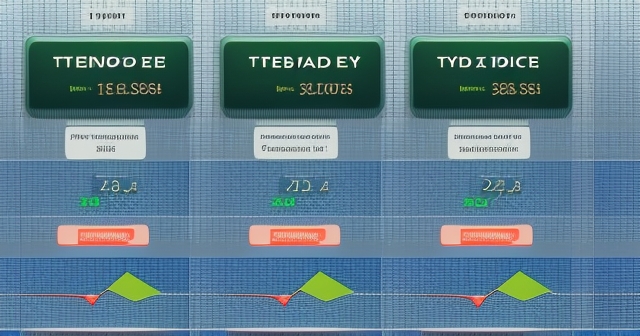
When you look at a detailed quote for a security, you often see not just the bid price and ask price, but also the bid size and the ask size. These numbers provide another layer of crucial information – they tell you about the immediate depth of supply and demand at those specific price points.
The bid size represents the total number of shares or contracts that buyers are willing to purchase at the current bid price. It aggregates all the limit orders to buy at that specific highest bid level.
The ask size represents the total number of shares or contracts that sellers are willing to sell at the current ask price. It aggregates all the limit orders to sell at that specific lowest ask level.
Together, the bid size and ask size (often seen as part of a larger “depth of market” or order book display) show you how much volume is immediately available for trading at the best available prices. A large bid size suggests significant buying interest right at the current highest bid, potentially indicating temporary support at that level. A large ask size suggests significant selling interest right at the current lowest ask, potentially indicating temporary resistance.
However, it’s important to remember that the bid size and ask size only show the immediate interest at the best bid and ask prices. The full order book would show the size available at multiple price levels below the bid and above the ask. Large orders can also be hidden or executed away from the public display, especially in institutional trading.
For smaller retail traders, the bid size and ask size primarily reinforce the notion of liquidity. In a highly liquid market, both sizes are typically large, confirming that there’s ample interest to absorb your trade without moving the price. In an illiquid market, sizes might be small or even non-existent, warning you that executing your desired quantity at the quoted prices could be difficult or result in significant price impact (slippage).
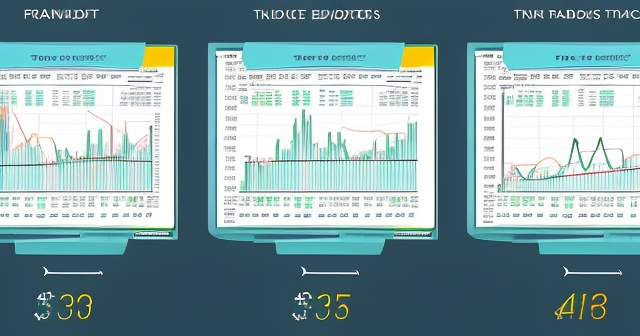
Now we arrive at the practical application of understanding bid and ask: choosing how to execute your trade. Your primary tools for interacting with these prices are your order types. The two most fundamental types are market orders and limit orders.
A market order is an instruction to buy or sell immediately at the best available price in the market. When you place a market buy order, you are essentially saying, “I want to buy this security right now, whatever the current lowest selling price is.” This means your market buy order will typically be filled at the prevailing ask price.
Similarly, when you place a market sell order, you are saying, “I want to sell this security right now, whatever the current highest buying price is.” Your market sell order will typically be filled at the prevailing bid price.
The key characteristic of a market order is its priority: **speed of execution**. You are virtually guaranteed to have your order filled quickly, as long as there is liquidity available at the best bid or ask. However, you surrender control over the exact execution price. In fast-moving markets or securities with wide spreads, the price you actually get might be different (and worse) than the price you saw when you placed the order – this is known as slippage, which we’ll discuss shortly.
A limit order, on the other hand, is an instruction to buy or sell a security at a specific price or better. When you place a limit buy order, you specify a maximum price you are willing to pay. For example, if the current bid/ask is $10.00 / $10.05, you might place a limit buy order at $10.00. Your order will only be filled if the price drops to $10.00 or lower (someone is willing to sell to you at that price or better). If you place a limit buy order above the current ask, it essentially acts like a market order up to your limit price.
When you place a limit sell order, you specify a minimum price you are willing to accept. Using the same example, if the bid/ask is $10.00 / $10.05, you might place a limit sell order at $10.05. Your order will only be filled if the price rises to $10.05 or higher (someone is willing to buy from you at that price or better). If you place a limit sell order below the current bid, it essentially acts like a market order down to your limit price.
The key characteristic of a limit order is its priority: **price certainty**. You are guaranteed that if your order is filled, it will be at your specified limit price or better. However, you surrender control over the speed of execution. There is no guarantee that your limit order will ever be filled, as the market price may never reach your specified limit.
Understanding the trade-off between speed (market order) and price control (limit order) is fundamental to strategic execution and directly relates to how you interact with the bid price and ask price.
The question “Should I buy at the bid price or the ask price?” is a bit of a simplification, but it gets to the heart of a crucial trading decision. As we’ve established, with a standard market order, you generally buy at the ask (the seller’s price) and sell at the bid (the buyer’s price). The actual question is really about whether you prioritize immediate execution or a potentially better price, and how you use order types to achieve that.
Buying at the Ask (Using a Market Buy Order):
- When to consider: You prioritize immediate entry into a position. This is necessary if you believe the price is moving quickly and you cannot afford to wait, or if you are trading based on a news event or technical signal that requires instant action.
- Pros: Almost guaranteed execution (assuming liquidity). You won’t miss a move because your order didn’t fill.
- Cons: You pay the higher price (the ask) and immediately incur the cost of the bid-ask spread. You are also exposed to slippage, especially in volatile or illiquid markets.
Attempting to Buy at the Bid (Using a Limit Buy Order at the Bid Price or Lower):
- When to consider: You prioritize getting a better price and are patient. You might place a limit buy order at the current bid price or even slightly lower, hoping that a seller will hit your bid. This is often a strategy employed in highly liquid markets where the spread is very narrow, or when you are willing to risk not getting filled for the sake of saving the spread cost.
- Pros: You potentially buy at a lower price than the current ask, effectively avoiding or reducing the cost of the spread. If filled, you have a better entry price.
- Cons: Your order might *not* get filled. The price could move higher without ever hitting your limit price, causing you to miss the trade opportunity. This approach is less suitable for urgent trades or when chasing momentum.
This choice represents a spectrum between “active” trading (using market orders to take liquidity and execute immediately) and “passive” trading (using limit orders within or near the spread to provide liquidity and potentially get a better price, but with no guarantee of execution).
Your decision depends heavily on:
- Your urgency: Do you need to be in the trade *right now*?
- Market liquidity: How wide is the spread? A narrow spread makes crossing it less costly. A wide spread makes attempting to get a better price more attractive, but also makes getting filled at the bid less likely.
- Your analysis: Do you anticipate the price will consolidate or potentially dip slightly before moving, or is it likely to blast off immediately?
For beginners, especially when trading highly liquid assets, using market orders for speed is common, but always be aware of the spread cost and slippage risk. As you gain experience, you can experiment with limit orders to potentially improve your execution prices, but be mindful of the risk of non-fill.
Understanding the bid and ask is fundamental to grasping the concept of slippage. Slippage occurs when the price at which your trade is actually executed differs from the price you expected when you placed the order. This difference can be positive or negative.
Slippage is most commonly associated with market orders. When you place a market order, you instruct your broker to fill it at the best available price. However, in the tiny fraction of a second between you clicking “buy” or “sell” and the order reaching the market and being filled, the best bid price or ask price can change.
Consider a stock trading at a bid/ask of $20.00 / $20.05. You place a market buy order expecting to pay $20.05. But just as your order arrives, a large batch of shares is bought, pushing the price up. The new best ask might be $20.07. Your market order will fill at $20.07. This is $0.02 of negative slippage – you paid more than the expected ask price.
Conversely, if you placed a market sell order expecting to receive $20.00, and a large sell order came in just before yours, dropping the bid to $19.98, your order might fill at $19.98. This is $0.02 of negative slippage – you received less than the expected bid price.
Slippage is more likely and often more significant under specific conditions:
- High Volatility: Prices are moving rapidly, increasing the chance that the price changes between order placement and execution.
- Low Liquidity / Wide Spreads: In thinly traded securities with wide spreads, placing even a moderately sized market order can “eat through” the limited quantity available at the best bid/ask, causing your order to fill at progressively worse prices on the other side of the order book.
- Trading Around News Events: Price gaps and extreme volatility are common around major announcements, making slippage highly probable with market orders.
- Large Order Size: A very large market order relative to the available size at the best bid/ask will almost certainly cause slippage as it needs to be filled by absorbing multiple price levels in the order book.
This is where limit orders offer protection. By placing a limit order, you cap your execution price. If you place a limit buy order at $20.05 (the current ask), you are guaranteed to pay $20.05 or less. If the price jumps to $20.07, your order simply won’t fill at that moment. While this mitigates negative slippage risk, it introduces the risk of non-execution. Similarly, a limit sell order guarantees you receive your limit price or more.
Understanding slippage is crucial for managing execution costs and risk, particularly when deciding whether to use a market order or a limit order to interact with the quoted bid and ask prices.
We’ve mentioned market makers several times. These entities, often large financial institutions or specialized trading firms, play a crucial role in maintaining orderly and liquid markets. They are willing to simultaneously quote both a bid price (a price at which they will buy) and an ask price (a price at which they will sell) for a given security. By doing so, they provide liquidity – they make it easier for you to buy or sell whenever you want.
How do they make money? Their business model is fundamentally based on the bid-ask spread. They aim to buy at their bid price (the lower price) and sell at their ask price (the higher price). If they can execute many such trades throughout the day, the cumulative difference between their buying and selling prices on those transactions, minus their costs, represents their profit.
For example, a market maker might offer to buy a stock at $10.00 (their bid) and sell it at $10.02 (their ask). If a trader sells to the market maker, the market maker buys at $10.00. If another trader then buys from the market maker, the market maker sells at $10.02. The market maker has just profited $0.02 per share by facilitating both sides of the trade. This profit is the spread.
Market makers face risks, primarily the risk that the price of the security will move significantly against them while they hold an inventory. If they buy shares at $10.00 and the price suddenly drops to $9.90 before they can sell, they lose money. Because of this risk, they are more likely to widen the spread during periods of high volatility or uncertainty to compensate themselves for the increased potential losses.
As a retail trader, you are generally a market taker. When you place a market buy order, you ‘take’ the available liquidity at the ask price offered by a market maker or another seller. When you place a market sell order, you ‘take’ the available liquidity at the bid price offered by a market maker or another buyer. When you place a limit order *within* the current spread (e.g., a buy limit below the ask but above the bid, or vice-versa), you are acting more like a liquidity *provider*, placing your order on the book hoping someone will ‘take’ it at your price.
Understanding the market maker’s role helps clarify why the spread exists and why it fluctuates. It’s a compensation mechanism for providing a vital service – ensuring there’s always a counterparty available when you want to trade.
The concepts of bid price, ask price, and the bid-ask spread are universal across virtually all financial markets, though their characteristics can vary based on the asset class and the specific market structure.
- Stocks: Covered extensively already. Spreads vary greatly depending on the stock’s popularity and market capitalization.
- Options and Futures: These derivatives also trade with distinct bid and ask prices and spreads. Options, especially those far out of the money or with little time left, can have very wide spreads due to lower trading volume compared to the underlying stock.
- Bonds: Bid-ask spreads for bonds can vary significantly based on the issuer’s creditworthiness, maturity, and liquidity. Corporate bonds, especially less common ones, often have wider spreads than highly liquid government bonds.
- Forex (FX): The foreign exchange market is known for its very tight spreads, particularly for major currency pairs like EUR/USD or GBP/USD. This is because it is the largest and most liquid financial market globally, operating 24 hours a day, five days a week. Forex brokers may offer compensation to liquidity providers either through the spread or via a separate commission.
- CFDs (Contracts for Difference): CFDs allow trading on the price movements of underlying assets (stocks, indices, commodities, Forex, etc.) without owning the asset. CFD pricing is derived from the underlying market, and they are quoted with a bid and ask price. Your cost of trading CFDs is often primarily built into the spread.
If you’re considering trading Forex or exploring CFDs, understanding how different platforms quote their bid and ask prices and what their spreads are is paramount. Some platforms might advertise extremely tight spreads but charge a commission per trade, while others have wider spreads with no commission.
If you’re considering trading in the global markets, whether Forex, CFDs, or other instruments, choosing a robust and reliable platform is a key part of your strategy. If you’re exploring options for trading various instruments, including Forex and CFDs, Moneta Markets is a platform worth considering. Based in Australia, they offer access to over 1000 financial instruments and support popular trading platforms like MT4, MT5, and Pro Trader. Their focus on high-speed execution and competitive spreads aims to provide a strong trading experience for different trader types.
Regardless of the asset class, the core principles remain: the bid price is what buyers are willing to pay, the ask price is what sellers are willing to accept, and the spread is the immediate cost and liquidity indicator. Always check the current quote details for the specific instrument you intend to trade.
Your understanding of bid and ask becomes particularly valuable when market conditions change. During normal, stable market hours for a liquid asset, the spread might be very narrow, perhaps just a few cents or pips. In such conditions, using a market order to enter or exit might be acceptable if speed is a priority, as the cost of crossing the spread is minimal, and slippage is less likely.
However, consider a situation where a major economic report is about to be released, or during a period of significant market turmoil. The spreads for many assets will likely widen significantly as market makers become more cautious. This is when the risk of using market orders increases dramatically. The price you see might be the last traded price or the current (wide) bid/ask, but the actual execution price could be far worse if your market order eats through limited liquidity on the other side of a wide spread.
In such volatile conditions, you might adjust your strategy:
- Use Limit Orders Cautiously: You could attempt to use limit orders to guarantee your execution price, but you run a high risk of not getting filled if the price moves rapidly past your limit.
- Wait for Stability: Often, the most prudent approach during extreme volatility is to wait for the initial surge of activity triggered by news to subside and for spreads to narrow back to more normal levels before executing a trade.
- Adjust Position Sizing: If you must trade during volatility, consider reducing your position size to mitigate the potential impact of wider spreads and slippage on your overall capital.
For US equities, regulatory mechanisms like the National Best Bid and Offer (NBBO) rule are in place. The NBBO is a requirement that brokers execute trades at the best available bid and ask prices across all regulated exchanges. While NBBO helps ensure you get a fair price compared to the broader market, it doesn’t eliminate the risk of rapid price changes causing slippage relative to the quote you saw microseconds before execution, especially with market orders in fast markets.
Ultimately, your ability to navigate different market conditions effectively is directly tied to your understanding of how liquidity and volatility impact the bid and ask prices and the resulting spread. This knowledge allows you to choose the most appropriate order type for the current environment.
Trading isn’t just about understanding charts and numbers; it also involves managing your own psychology. The bid and ask dynamic can play into psychological biases, particularly the fear of missing out (FOMO).
Imagine you see a stock price starting to surge. The current bid price is $50.00 and the ask price is $50.10. Your technical analysis suggests the price is heading to $52.00. You feel an urgent need to get in. Using a market order means you’ll likely buy at $50.10 (the ask), immediately being $0.10 “underwater” due to the spread. Your fear of missing out might override the awareness of this immediate cost and potential slippage.
Alternatively, you might try to be patient and place a limit buy order at $50.05 (halfway in the spread) or even $50.00 (the bid), hoping for a small dip or for a seller to hit your bid. However, if the price continues to climb rapidly past $50.10, your limit order might not fill, leading to frustration and the feeling of having missed the opportunity. This can trigger a different psychological response, perhaps tempting you to chase the price higher with a market order at a much worse level.
Recognizing that buying typically occurs at the ask and selling at the bid with market orders helps ground your expectations in reality. It allows you to make a conscious decision about whether the potential reward of the trade justifies the immediate cost of the spread and the risk of slippage (using a market order), versus the risk of non-execution (using a limit order to seek a better price).
There’s no single “right” answer to always buy at the bid or always sell at the ask. The “right” approach is the one that aligns with your trading plan, your analysis of the current market conditions (especially the spread and liquidity), and your risk tolerance. By understanding the mechanics, you can reduce emotional decision-making based on immediate price movements and instead focus on strategic execution.
In the complex world of financial trading, seemingly small details can have a significant impact on your profitability. The bid price and ask price are not just numbers on a screen; they represent the point where real transactions can occur right now. The bid-ask spread is a fundamental measure of liquidity and an inherent cost you must understand and manage.
We’ve seen how supply and demand, trading volume, and market volatility constantly shape these prices and the spread between them. We’ve also learned that your choice of order type – market order for speed, typically executing at the ask (buy) or bid (sell), versus limit order for price control, risking non-execution – dictates how you interact with this fundamental two-sided quote.
Addressing the core question of whether to “buy at bid or ask” reveals that it’s not a matter of choosing which price to magically execute *all* your trades at. Rather, it’s a strategic decision about whether you are willing to pay the ask price (and cross the spread) for guaranteed immediate execution (using a market order), or whether you are patient and willing to risk non-fill for the chance to buy closer to the bid price (using a limit order).
Understanding the risks like slippage, particularly when using market orders in less liquid or volatile markets, is paramount. Your execution strategy should adapt to the prevailing market conditions and the specific characteristics of the asset you are trading.
By mastering the concepts of bid and ask, the bid-ask spread, and the strategic use of market and limit orders, you empower yourself to make more informed decisions about when and how to enter and exit your positions. This knowledge helps minimize unnecessary trading costs, manage execution risk, and ultimately contribute to more consistent and successful trading outcomes. Continue to study these dynamics, practice with different order types (perhaps in a demo account first), and refine your approach based on your experience in the live market.
| Category | Bid Price | Ask Price |
|---|---|---|
| Stocks | $10.00 | $10.05 |
| Options | $2.00 | $2.10 |
| Bonds | $1000 | $1010 |
FAQ
Q:What is a bid-ask spread?
A:The bid-ask spread is the difference between the bid price and the ask price of a security, indicating the cost of entering and exiting trades.
Q:Why do buy and sell orders have different prices?
A:The buy (bid) price reflects the highest amount a buyer is willing to pay, while the sell (ask) price indicates the lowest amount a seller will accept. The difference is the spread.
Q:What factors influence the bid-ask spread?
A:Factors such as trading volume, market volatility, news, asset specifics, and the time of day can all impact the width of the bid-ask spread.
